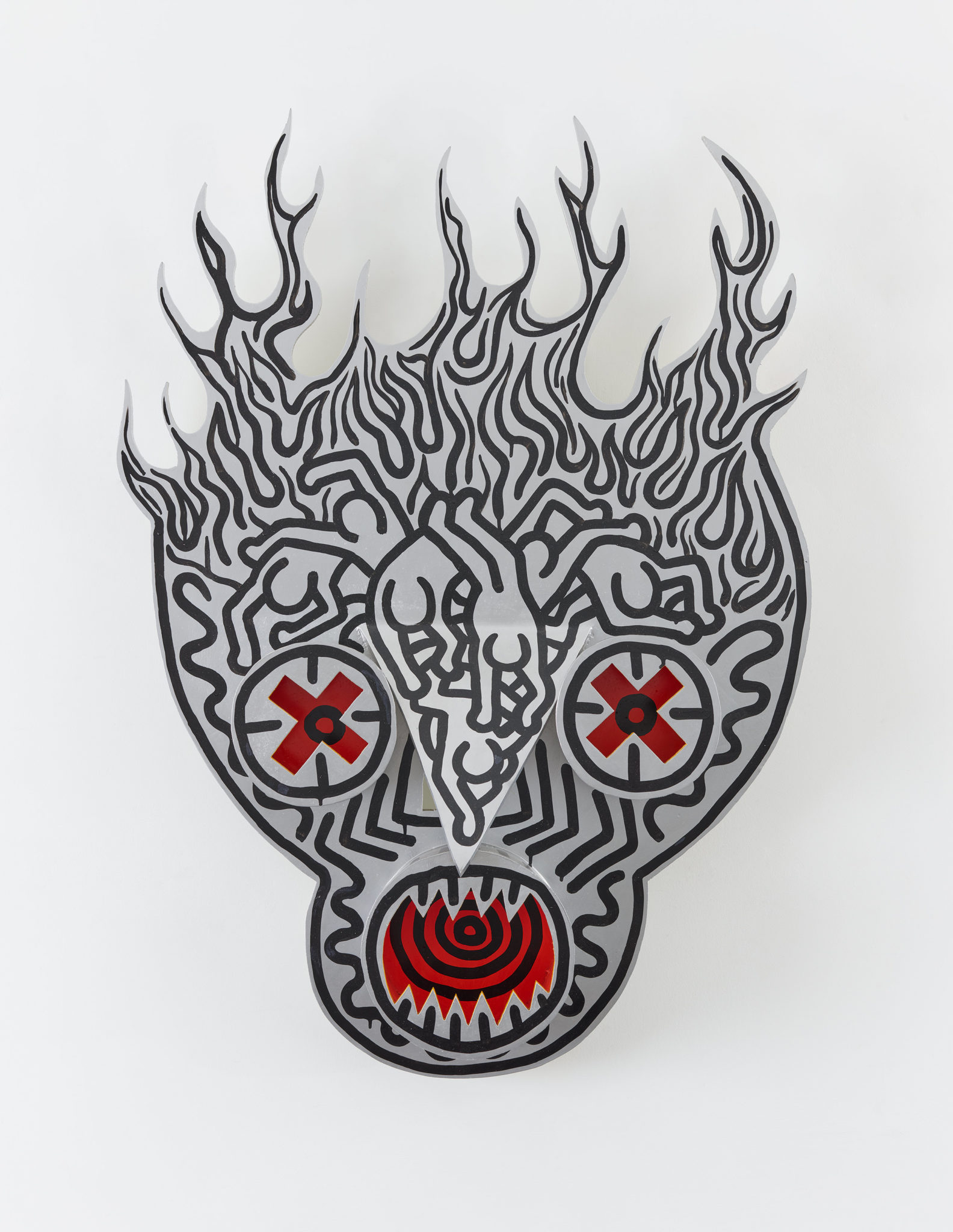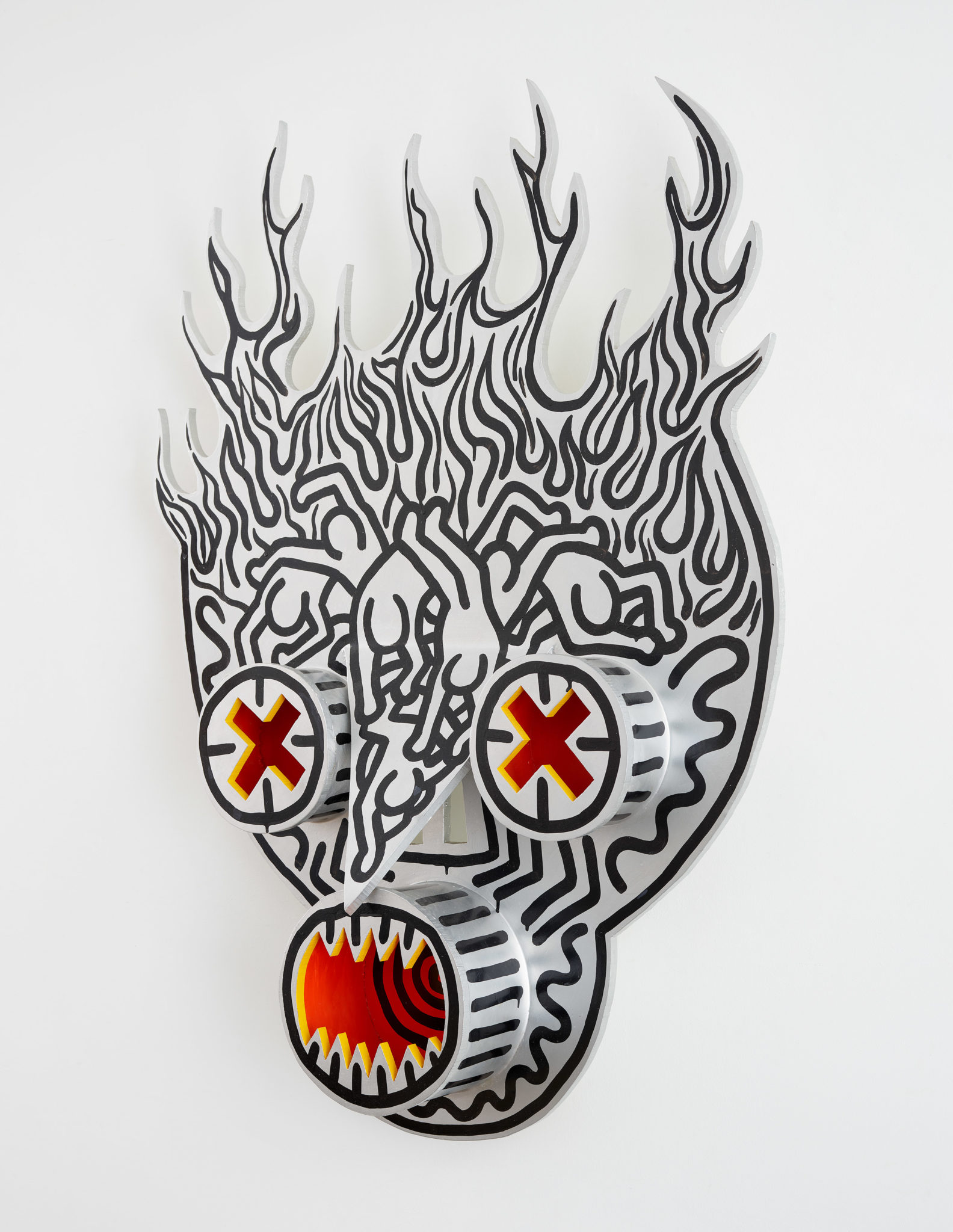Keith Haring | Untitled (Burning Skull)
Untitled (Burning Skull)
1987
Enamel on Aluminum
44 x 31 x 9 inches (111.8 x 78.7 x 22.9 cm)
© 2018 The Keith Haring Foundation
Photo: Elisabeth Bernstein
In 1987, near the end of his tragically brief life, Keith Haring created a series of eight masks. Consisting of his rhythmic, black contoured forms in enamel paint atop shaped pieces of aluminum, they speak to his abiding—if often unrecognized—interest in sculpture, which he had begun to pursue in earnest in 1985. Their exoticism further attests to Haring’s longstanding interest in folk art and other “outsider” forms of cultural expression. Eclectic and ranging in his taste, Haring embraced the early modernism of such Western masters as Henri Matisse, Pablo Picasso, and Fernand Léger alongside African and Mesoamerican influences, selecting and combining aspects of each to forge his distinctive iconography.
Untitled (Burning Skull) stands out for its dark imagery. Fiendish and menacing, it features eyes made of X’s, razor-sharp teeth, and a mane of lashing flames. In its center, Haring’s signature, faceless figures tumble toward a red abyss. While Haring is typically associated with cheerful imagery, such as radiant babies and outsize hearts, he never shied from troubling topics, balancing his celebrations of life with trenchant examinations of illness, systems of power, aggression, and death.
Raised in a devout household, Haring often employed religious motifs in his art. Like his peer, the pop singer, Madonna, he conceived Christianity as a fertile ground for rebellion. The X-like forms that define Untitled (Burning Skull)’s eyes are staples within Haring’s iconography, and he often included the symbol of an X enclosed by a circle as an addition to his signature. Here Haring conflates the Greek and Latin crosses with a trope in popular cartoons, wherein Xs appear over a character’s eyes to indicate death, conflating high and low cultural arenas with typical simplicity and wit.



